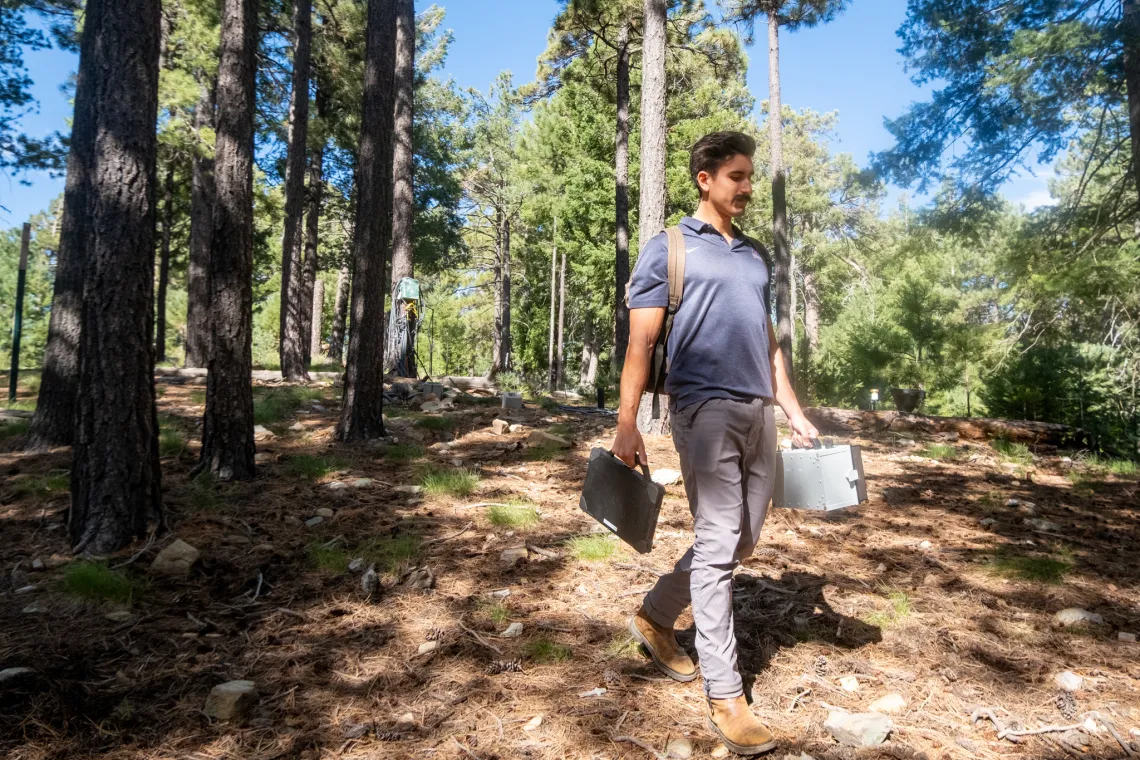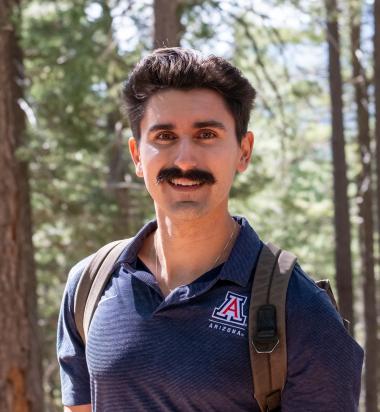A Student's Perspective: A note on soil
Environmental Science graduate student Alexander Ederer shares his experience, both physically and emotionally, while conducting research in the field

Alexander Ederer
Jake Kerr
It was only 4 p.m., but a thick darkness enveloped the mountaintop, taunting me with the chance of a storm. I was losing feeling in my fingers from digging through the five-foot snowpack, but I finally found the gas wells with a metal detector and only had four more to sample — I’d come too far to turn back now.
Snow was falling harder now and whipping against my face. I could no longer handle the Sharpie, let alone read what I was writing on the sample tubes. In these moments, the scorching desert is nothing but a distant dream, another planet.

Alexander Ederer is a graduate student in Environmental Science, researching in the Chorover Lab.
Yet, somehow when I’m jackhammering into the hard desert ground on a 110-degree day, I can close my eyes and the mountain snow is so close I can practically taste it. With their striking extremes, the Catalinas beckon me to immerse in and be transformed by the same elements that shape the Critical Zone, from the top down and bottom up.
I like to think of myself as a hoodoo (the geologic formations at Windy Point on Mount Lemmon) perched on the Sky Island looking out over a sea of desert, sculpted by the elements, but never swaying. From the size of the basin down to the tiniest nanoparticle, I’m swallowed up by mind-boggling scales that invoke a sense of biogeochemical nirvana.
The joys of my research push me deeper and deeper into my own subsurface layers, and for some mysterious reason, every ounce of energy I put into studying soil somehow finds its way back to me in the form of artistic inspiration.
In my life, science and art encircle one another like yin and yang, dancing about in dynamic harmony according to some sort of reciprocal dualism. If we stop everything we’re doing and pick up a handful of soil, we can instantly sense that our existence is a miracle, and death is right around the corner.
Studying soil is a sure way to situate ourselves within the cosmos and the higher consciousness we reach from this endeavor is contagious. In the eyes of Sky School students, I see bright lights shining into mine — absorbing, transforming, and emitting my energy in different forms. The more upfront I am about environmental science’s emotive capacity, the more I strike a sense of awe and wonder in our students.
Is this guy a kid pretending to be a scientist, or a scientist pretending to be a kid? And what kind of scientist dresses like a cowboy and goes by the nickname ‘Dirty’?
In one of my favorite quotes of all time, Salvador Dalí describes my favorite poet, Federico García Lorca:
“The phenomenon in its entirety and ‘in the raw’ presented itself before me suddenly in flesh and bone, confused, blood-red, viscous, and sublime, quivering with a thousand fires of darkness and subterranean biology… (Gypsy Romances, p. 1)
This man is out of his mind, you might think; but in Lorca’s perspective, true inspiration comes from being close to the wild and having a “strong connection with the soil” (Poems of the Deep Song, p. 10). Whether in the lab, in the field, or on a Sky School program, the more I own up to my emotional relationship with the Earth, the better I am as a scientist, a peer, and a human. Cheers to three more thrilling and productive years!
